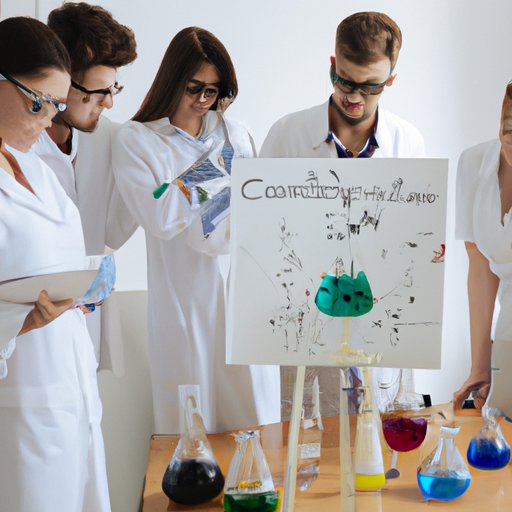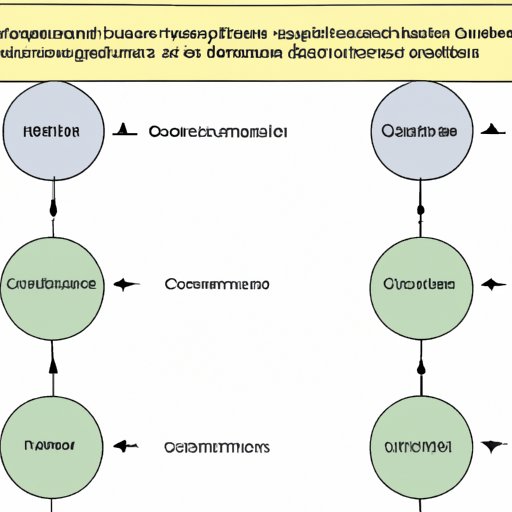An Overview of Experimental Groups in Science: What They Are and How They Work
Experimental groups are a key component of scientific research and are used to test hypotheses or theories. An experimental group is a group of subjects that are exposed to a particular treatment or intervention in an experiment. The goal of an experiment is to study how the intervention affects the subjects’ behavior or responses. In order to do this, researchers must be able to compare the results of the experimental group with those of another group, called a control group. This comparison allows them to draw conclusions about the effectiveness of the intervention.
Definition of an Experimental Group
An experimental group is a group of individuals who are exposed to a particular treatment or intervention in an experiment. The purpose of the experiment is to study how the intervention affects the behavior or responses of the individuals in the group. The experimental group is compared to a control group, which receives no treatment or intervention. The comparison allows researchers to determine whether the intervention had any effect on the behavior or responses of the individuals in the experimental group.
Components of an Experimental Group
In order for an experimental group to be effective, it must have certain components. First, it must have a homogenous population, meaning that all members of the group are similar in terms of age, gender, race, education level, etc. Second, it must have a clear definition of what constitutes the intervention and how it will be administered. Finally, the experiment must have a method for measuring the effects of the intervention on the individuals in the group.
Types of Experimental Groups in Science
There are two main types of experimental groups in science: true experiments and quasi-experiments. True experiments involve randomly assigning subjects to either the experimental or control group and manipulating the independent variable (the intervention). Quasi-experiments involve selecting subjects for the experimental and control groups based on pre-existing characteristics, such as age or gender, rather than randomly assigning them. Quasi-experiments are often used when it is not possible or ethical to randomly assign subjects to the different groups.

Exploring the Significance of Experimental Groups in Scientific Research
Experimental groups are essential for conducting scientific research. They allow researchers to generate data, assess the reliability and validity of their results, and draw conclusions about the effectiveness of the intervention.
The Role of Experimental Groups in Generating Data
Experimental groups are used to generate data that can be used to answer research questions. By comparing the results of the experimental group with those of the control group, researchers can determine if the intervention had any effect on the behavior or responses of the individuals in the experimental group. This comparison allows researchers to draw conclusions about the effectiveness of the intervention.

Assessing the Reliability and Validity of Results
The use of an experimental group also allows researchers to assess the reliability and validity of their results. Reliability refers to the consistency of the results over time. Validity refers to the accuracy of the results. By using an experimental group, researchers can ensure that their results are reliable and valid.
The Role of Experimental Groups in Scientific Experiments
Experimental groups play an important role in scientific experiments. They provide a way for researchers to measure the effects of the intervention on the individuals in the group. In order to do this, researchers must identify the variables involved in the experiment and understand the purpose of the experimental group.
What Is Measured in an Experiment
In an experiment, researchers measure the effects of the intervention on the behavior or responses of the individuals in the experimental group. This includes changes in attitude, knowledge, skills, and behaviors. Researchers may also measure physiological changes, such as heart rate or blood pressure.

Understanding the Purpose of an Experimental Group
The purpose of an experimental group is to test the hypothesis or theory being studied. By measuring the effects of the intervention on the individuals in the group, researchers can determine if the hypothesis or theory is supported by the data. If the data supports the hypothesis or theory, then the results of the experiment are considered valid.
Identifying the Variables Involved
In order to measure the effects of the intervention on the individuals in the experimental group, researchers must first identify the variables involved in the experiment. These include the independent variable (the intervention), the dependent variable (the behavior or response being measured), and any confounding variables (factors that could potentially influence the results). Once these variables have been identified, researchers can design the experiment to measure the effects of the intervention on the dependent variable.

Comparing Experimental and Control Groups in Scientific Studies
In an experiment, the experimental group is compared to a control group. The control group receives no treatment or intervention and serves as a baseline for comparison. By comparing the results of the experimental group with those of the control group, researchers can determine if the intervention had any effect on the behavior or responses of the individuals in the experimental group.
Differences between Experimental and Control Groups
There are several key differences between experimental and control groups. First, the experimental group is exposed to the intervention, while the control group is not. Second, the experimental group is used to measure the effects of the intervention, while the control group is used to measure the baseline or natural state of the behavior or response being studied. Finally, the experimental group is often smaller than the control group.
Factors that Influence the Outcome of an Experiment
There are several factors that can influence the outcome of an experiment. These include the selection of subjects, the type of intervention used, the length of the experiment, and the way the results are analyzed. All of these factors must be carefully considered in order to ensure that the results of the experiment are reliable and valid.

Analyzing the Benefits and Limitations of Experimental Groups in Science
Experimental groups offer many benefits to scientists, but they also have some limitations. It is important to understand both the advantages and disadvantages of using experimental groups in order to make informed decisions about their use in scientific research.
Advantages of Using Experimental Groups
The use of experimental groups has several advantages. First, they allow researchers to generate data that can be used to answer research questions. Second, they provide a way to measure the effects of the intervention on the behavior or responses of the individuals in the group. Finally, they allow researchers to assess the reliability and validity of their results.
Disadvantages of Using Experimental Groups
The use of experimental groups also has some drawbacks. For example, they require a large amount of time and resources to set up and conduct. Additionally, they may not always be feasible or ethical to use, depending on the type of experiment being conducted. Finally, there is always the possibility that the results of the experiment may be influenced by outside factors, such as the selection of subjects or the type of intervention used.
Conclusion
Experimental groups are an essential component of scientific research. They allow researchers to generate data, assess the reliability and validity of their results, and draw conclusions about the effectiveness of the intervention. Understanding what an experimental group is, how it works, and the advantages and disadvantages of using one is essential for conducting successful scientific experiments.
(Note: Is this article not meeting your expectations? Do you have knowledge or insights to share? Unlock new opportunities and expand your reach by joining our authors team. Click Registration to join us and share your expertise with our readers.)
